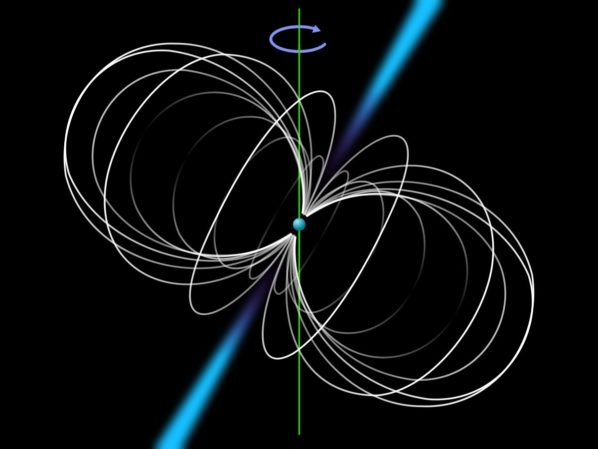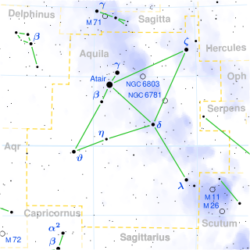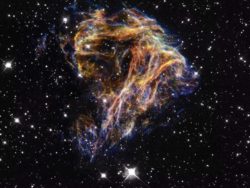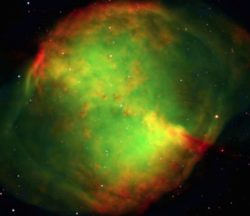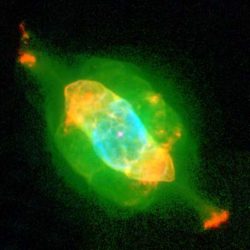A Pulsar With Planets
Pulsars emit deadly radiation, disintegrating DNA and making them dangerous. Surprisingly, some have planets orbiting them, defying current theories.
Aquila Constellation
Discover Aquila, the eagle, in Greek mythology. Explore its notable stars like Altair and Alshain, as well as intriguing deep-sky objects.
Astronomy Picture of the Week – Distant Nebula
This nebula, designated as N 49 or DEM L 190, looks like puffs of smoke or sparks from a fireworks display. It is one of the most distant nebulae ever observed, located in the Large Magellanic Cloud, a dwarf galaxy orbiting the Milky Way. The nebula is the result of a large supernova, whose light should have reached Earth a few thousand years ago.
Astronomy Picture of the Week – M27 Or Dumbbell Nebula
This greenish nebula was discovered by Charles Messier, a French astronomer of the 18th century. Originally he did not know what the object was, except that it was neither a star nor a comet. Now we know that it is a planetary nebula. It was formed by the explosion of a sun-like star (nova). It is officially designated as Messier 27 (M27, or NGC 6853), while it is commonly known as the Dumbbell Nebula. This beautiful nebula is located over 1,200 light-years away in the Vulpecula constellation. Image Credits: ESO, the European Southern Observatory.
Astronomy Picture of the Week – Nebula NGC 7009
This odd greenish nebula, called NGC 7009 or the Saturn Nebula, is the result of a star similar to our sun going nova. Since then, a bright new star was born from the gases of its predecessor. It can be seen in the center of the nebula, inside the bluish sphere of gas. The nebula is located 1,400 light-years away in the constellation of Aquarius. The picture was taken by the Hubble Space Telescope. Image Credits: NASA and Hubble Space Telescope

